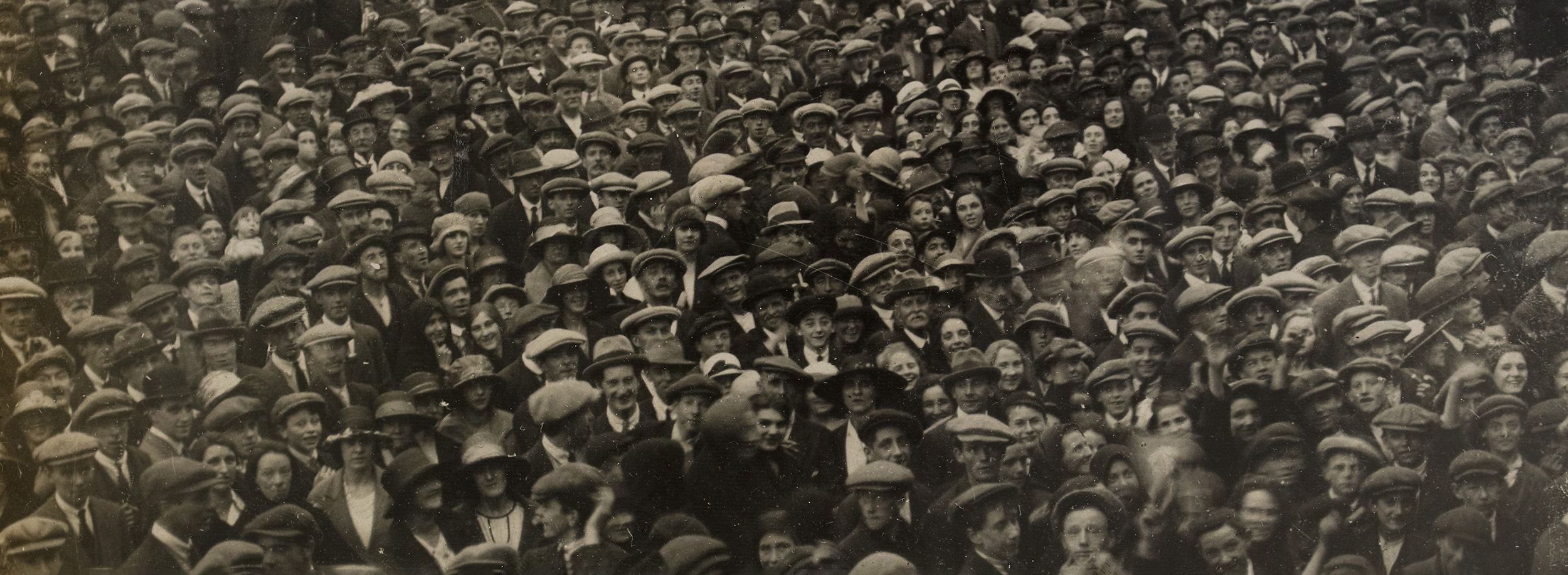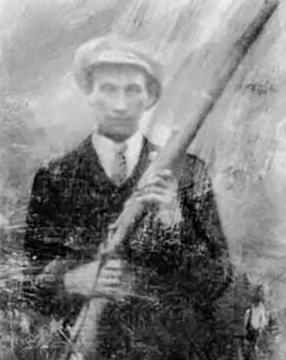Civil War Fatalities in Clare

Civil War Fatalities in Clare
by Pádraig Óg Ó Ruairc
‘The Banner County’ was the scene of some of the worst violence during the War of Independence when Clare Republicans were to the fore both politically and militarily during the struggle to establish an Irish Republic. Between 1917 and 1921 the county was the scene of some of the largest and most successful IRA ambushes, as well as some of the most brutal reprisals perpetrated by the British Crown forces in retaliation. After Cork and Tipperary - Clare had the third highest rate of fatalities per head of population during the war with the British.
In contrast to its prominent role in the War of Independence, Clare was very much a ‘backwater’ during the Civil War. The Clare IRA were deeply divided on the terms of the Treaty and riven by internal feuds. Consequently, the anti-Treaty IRA’s campaign in Clare was largely confined to the west of the county and had very little bearing on the overall military outcome of that conflict. During the Civil War, Clare had the lowest rate of fatalities of any Munster county, and the level of conflict there was comparable to, or less than, most Leinster counties during the same period.
Clare Fatalities in other theatres of the Civil War
There were thirty-seven Civil War fatalities in Clare – seventeen National Army, ten IRA and ten civilians. Although the number of fatalities within the county was quite low, Claremen feature prominently in several of the main theatres of war. In Kerry, where the conflict was at its most bitter, many of the fatalities were Claremen serving in the 1st Western Division of the National Army. On the anti-Treaty side, one of the very first casualties of the war was IRA Volunteer Joseph Considine from Clooney, who was killed on the first day of the Battle of the Four Courts in Dublin.
Another Clareman killed in the capital was IRA Volunteer Michael Neville a barman from Lisdoonvarna killed in September 1922 who was one of many anti-Treaty Republicans abducted and summarily executed by government forces in the capital. The death of Clare IRA Volunteer Patrick Hennessy who was executed in Limerick in January 1923 took on national significance because, at the time of his death, Hennessy was chairman of the Clare County GAA Board. His execution caused a Pro-Treaty vs anti-Treaty split in the GAA in Clare which was reminiscent of the pro and anti-Parnellite schism in the organisation forty years earlier. Outside of Clare the GAA maintained its unity in-spite of the deep political divisions caused by the Civil War.
The Treaty split in Clare
During the War of Independence the IRA in the county had been organised into three brigade areas – West Clare, Mid-Clare and East Clare. Following the signing of the Treaty the majority of the membership of the IRA’s West-Clare and Mid-Clare Brigades opposed the Treaty whilst the East Clare Brigade supported the agreement.
Prior to the split over the Treaty, the leadership of the IRA within Clare was already deeply divided by personal grievances. There was a great deal of animosity between the Barrett brothers who controlled the IRA’s Mid-Clare Brigade and their rivals, the Brennan Brothers, who dominated the IRA’s East Clare Brigade. This division may explain why all five republicans executed by the Free State Army during the Civil War were members of the IRA’s Mid-Clare Brigade sentenced to death in military commands controlled by officers who had been members of the IRA’s East-Clare Brigade prior to the split.
Initially the county’s electorate were divided on the Treaty returning two pro-Treaty and two anti-Treaty TDs (including Éamon de Valera). At the start of the conflict the National Army encountered little resistance or animosity from the populace. However that began to change when the government troops began harassing the local population by repeatedly raiding dance halls on Saturday nights and Catholic churches during Sunday morning Mass while searching for republican suspects.
This value of this tactic was questionable given that Bishop Fogarty and the majority of his clergy were staunchly pro-Treaty during the Civil War and were in the habit of barring anti-Treaty republicans from attending church services. The church raids only served to antagonise local people and gave rise to a good deal of hostility amongst churchgoers who would otherwise have remained neutral or supported the Provisional Government. The local Protestant – Loyalist people of Clare made up less than two per cent of the population and suffered no fatalities in either the War of Independence or Civil War. Aside from financial loss, a decline in social status and (in a few cases) the destruction of their property, they emerged largely unscathed from the Irish Revolution in comparison with their counterparts in other counties.
-911x655.jpg)
Fig. 1 Map showing the location and affiliation of the thrity-seven combatant and civilian fatalities in County Clare between 28 June 1922 and 24 May 1923
Causes of death in Clare
There were no large-scale urban battles in Clare during the Civil War as had occurred in Dublin, Cork, Limerick, Kerry and Waterford. The IRA’s military campaign against the National Army in Clare was limited to a few ambushes on motor patrols, attacks on isolated military barracks and, on one or two occasions, attempts to shoot National Army soldiers at close quarters in ‘hit and run’ attacks.
The IRA’s campaign inflicted just eight fatalities on their Free State opponents. Just three of the IRA Volunteers who died were killed in action fighting against the Free State Army, a further three were executed in Ennis in the later stages of the conflict in late April and May 1923. As was the case in Kerry, quite a number of National Army soldiers stationed in Clare died as a result of accidental shootings – these deaths were mostly due to carelessness with arms, ‘horseplay’ with guns and possibly, in a few cases, suicide.
In terms of the ten civilian fatalities at least two were killed by National Army soldiers, two died of heart failure during robberies and several others were shot by ‘persons unknown’ and are unattributed. A significant obstacle faced by Bielenberg and Dorney in their ground-breaking research on Civil War fatalities in County Clare and nationally was the level of agrarian violence that persisted throughout the 1920s. Agrarian killings in Clare had long pre-dated the War of Independence / Civil War and it is often difficult to separate agrarian killings from those that resulted from political and military conflict.
Despite the low intensity of the conflict and the anti-Treaty IRA’s failures in Clare the county remained a bastion of anti-Treaty republicanism with sporadic IRA activity continuing throughout the 1920’s and into the early 1930s.
Fatality Profiles
Unidentified Civilian Fatality
In March 1923 a group of children playing in the graveyard surrounding the ruins of a medieval church in Kilmaley, County Clare, peered through an opening in one of the burial vaults and caught a glimpse of a pair of boots and the lower section of a man’s body lying on its side on the floor of the crypt. The terrified children immediately alerted the parish priest, Fr Murphy, who in turn sent his curate, Fr Ryan to alert the authorities.
Garda Sergeant McGillicuddy and Commandant Thomas Wall of the National Army discovered the badly decomposed body of a man inside the burial vault. He was dressed in dark-green civilian clothing and had been wearing brown leather boots. Both the man’s clothing and footwear were caked in mud. His legs had been bound together and a blindfold had been tied across his eyes. The only possessions discovered on the body were a set of rosary beads and a prayer book, with the front cover and the first sixty-two pages torn out. The remains were removed by the Red Cross and at an inquest held in Ennis the coroner determined that the man had been killed about four weeks previously. The body was in such a state of decomposition and the face so badly damaged that the unknown man’s age could not be determined and visual identification, even by someone who had known him, would have been impossible.
All that could be ascertained was that the man was 5’8” in height, of strong muscular build, suggesting that he was a labourer, and had no grey hair, indicating that he was relatively youthful. The body was formally buried in a council graveyard but was never identified. The IRA in West Clare were known to use vaults in churchyards at Churchtown, Kilmacduane and Kilmurry-Kilquane graveyards to shelter and hide Volunteers who were on the run, which suggests that there may have been republican involvement in this man’s execution but, like his identity, this cannot be confirmed.
IRA: Captain Martin ‘Murt’ Moloney
Murt Moloney was born to Martin and Bridget Moloney (née Clune) in Cloontismara, Inagh on 12 December 1901. He joined the IRA in 1917 and two years later, was promoted to the rank of Captain of B (Inagh) Coy. 4th Battalion of the IRA’s Mid-Clare Brigade.
IRA Commandant Seamus Hennessy described Moloney as ‘a fine character of a young fellow and was one of the best, disciplined courageous IRA Officers I ever met.’ Hennessy’s Vice-Commandant Steve Gallagher recalled Moloney as a ‘strict teetotaller and a most active officer, who was always obedient and trustworthy.’ Like these commanding officers who praised him, Moloney took the anti-Treaty side in the Civil War.
On Monday 9 April 1923 a party of National Army soldiers began raiding houses in Inagh and surrounded the Moloney homestead surprising Martin Maloney who was unarmed. After he surrendered Martin was fatally wounded by one of the soldiers; his brother Thomas was arrested and taken to Ennistymon.
According to Mortimer Maloney his son was murdered after surrendering: ‘My son went away about forty or fifty yards. I saw him standing at Michael Clune’s yard with his hands up, and a few seconds afterwards I saw him fall after a shot had been fired. I went towards him when I saw him fall, and I found him lying on his back, and he told me he was shot. I saw two soldiers in the yard. I knew one of them, Stephen Foody, but not the other. My son said: ‘That man [Private] Collins shot me.’ The man named by him as Collins said: ‘I did not shoot him. It was [Private] Foody shot him.’ Foody said: ‘I fired no shot at him.’ My son said again: ‘It was Collins shot me.’ Nothing more was said, and three or four of us carried my son home and put him to bed, and after a while undressed him. We then sent for the priest and doctor, and he was attended by Fr Grace, CC Inagh and Dr Hillery of Miltown Malbay. He was removed by an ambulance to Ennistymon hospital.’ Martin Moloney died of his wound the next day and was later buried in Inagh Cemetery.

Fig. 2 Captain Martin ‘Murt’ Moloney
National Army: Private Stephen Canty Jr.
Stephen Canty was the son of Stephen Canty Snr. a shopkeeper and farmer and his wife Hannah who lived in Drumnacurra near Causeway in North Kerry. After finishing school Stephen Canty Jr. began working as a labourer. He did not serve in the IRA during the War of Independence and had no military experience prior to joining the Free State Army. On 21 April 1923 members of the IRA’s Mid-Clare Brigade attacked a group of National Army soldiers in Carmody Street in Ennis. During the ensuing gun battle, Canty was shot dead by IRA Volunteer Miko Casey. In the aftermath of the attack two local IRA Volunteers Patrick O’Mahony and Jim O’Leary were arrested.
The following Monday the jury at the inquest into Canty’s killing ruled: ‘That Stephen Canty, Private in the National Army, was unlawfully shot in Carmody Street on the night of 21 April 1923 by some persons unknown. From the evidence we further find that neither the prisoners, O’Mahony or O’Leary could have fired the fatal shot.’ Despite this ruling O’Mahony and O’Leary were both tried by a military court-martial and found guilty of the murder of Private Canty and were sentenced to death. O’Leary’s sentence was commuted to ten years’ imprisonment. However O’Mahony’s sentence was not commuted and he was executed with two other IRA Volunteers, William O’Shaughnessy and Christopher “Christy” Quinn, on 2 May 1923.

Fig. 3 Private Stephen Canty Jr.
Author’s Bio
Pádraig Óg Ó Ruairc has a PhD in Irish History and has published several books on the Irish Revolution including The Battle for Limerick City published by Mercier Press. His most revent book, The Disappeared: Forced Disappearances in Ireland 1798 – 1998 (Merrion Press, Dublin) was published in February 2024.




